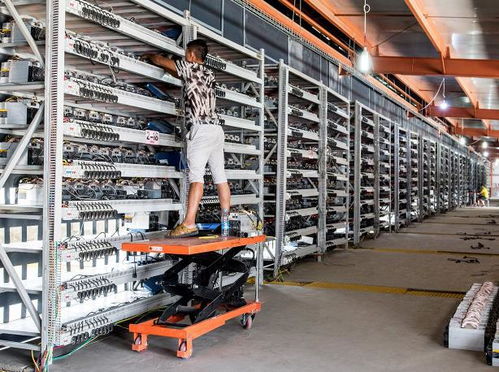The digital gold rush is upon us, and the clamor for Bitcoin, Ethereum, Dogecoin, and a plethora of other cryptocurrencies echoes around the globe. But behind the flashing charts and breathless headlines lies a complex, energy-intensive process: mining. And for many, the question isn’t just *what* to mine, but *how* to mine efficiently and effectively. This is where the concept of maximizing hashrate while minimizing hassle comes into sharp focus, leading many to explore the world of mining machine hosting.
Understanding the cryptocurrency landscape is paramount. Bitcoin (BTC), the granddaddy of them all, operates on a proof-of-work (PoW) consensus mechanism, demanding immense computational power to solve complex cryptographic puzzles and validate transactions. Ethereum (ETH), while transitioning to a proof-of-stake (PoS) model, still has a significant mining presence. And then there’s Dogecoin (DOGE), the meme-coin darling, which, while less computationally demanding than Bitcoin, still requires dedicated mining hardware.
The lure of crypto riches often draws individuals to purchase their own mining rigs – specialized computers designed specifically for the task of cryptocurrency mining. These rigs, packed with powerful GPUs or custom ASICs (Application-Specific Integrated Circuits), churn through calculations day and night, contributing to the network’s security and earning rewards in the form of newly minted coins. However, owning and operating a mining rig comes with its own set of challenges.
Consider the initial investment. High-performance mining rigs can be expensive, often costing thousands of dollars. Then there’s the power consumption. These machines are energy hogs, drawing significant amounts of electricity and potentially leading to hefty utility bills. Furthermore, the constant operation of these rigs generates considerable heat, requiring robust cooling solutions to prevent overheating and maintain optimal performance. Finally, the noise generated by these machines can be disruptive, making them unsuitable for residential environments.

This is where mining machine hosting emerges as a viable alternative. Hosting providers operate dedicated data centers, often located in regions with access to cheap and reliable electricity, specifically designed for cryptocurrency mining. These facilities offer a range of services, including secure housing for your mining rig, stable internet connectivity, professional maintenance, and robust cooling systems. By outsourcing the technical and logistical aspects of mining, individuals can focus on maximizing their hashrate – the measure of a mining rig’s processing power – and minimizing the hassles associated with managing their own hardware.
Choosing the right hosting provider is crucial. Factors to consider include the provider’s reputation, the cost of hosting services (including electricity rates and maintenance fees), the uptime guarantee, and the security measures in place to protect your equipment. It’s also important to understand the provider’s policies regarding hardware upgrades and replacements, as well as their customer support responsiveness. A well-vetted hosting provider can significantly improve your mining profitability and provide peace of mind.
Beyond Bitcoin, Ethereum, and Dogecoin, the world of cryptocurrency mining extends to a vast array of altcoins, each with its own unique algorithms and profitability potential. Some coins are ASIC-resistant, meaning they can be mined more efficiently using GPUs, while others are specifically designed for CPU mining. Understanding the characteristics of different cryptocurrencies and their respective mining algorithms is essential for optimizing your mining strategy and maximizing your returns.
The constant evolution of the cryptocurrency market also presents challenges and opportunities. The difficulty of mining Bitcoin, for example, adjusts dynamically based on the network’s overall hashrate. As more miners join the network, the difficulty increases, making it harder to earn rewards. Conversely, if miners leave the network, the difficulty decreases, making it easier to earn rewards. Staying informed about market trends and adjusting your mining strategy accordingly is crucial for long-term success.
Moreover, the regulatory landscape surrounding cryptocurrency mining is constantly evolving. Some jurisdictions have embraced cryptocurrency mining and offer favorable tax incentives, while others have imposed stricter regulations or even outright bans. Staying abreast of these regulatory developments is essential for ensuring compliance and avoiding potential legal issues. Careful consideration must be given to the legality of mining in your region, including potential environmental impact assessments and energy consumption restrictions.
Ultimately, maximizing hashrate and minimizing hassle in the world of cryptocurrency mining requires a strategic approach. Whether you choose to build your own mining rig or outsource to a hosting provider, a thorough understanding of the technology, the market dynamics, and the regulatory environment is essential for success. The digital gold rush may be underway, but like any prospecting venture, careful planning and execution are the keys to striking it rich.


This insightful article delves into optimizing cryptocurrency mining by weighing different hosting options. It artfully combines expert opinions with data-driven insights, helping miners enhance their hashrate while navigating the complexities of hosting. A must-read for anyone looking to streamline their mining efforts efficiently.